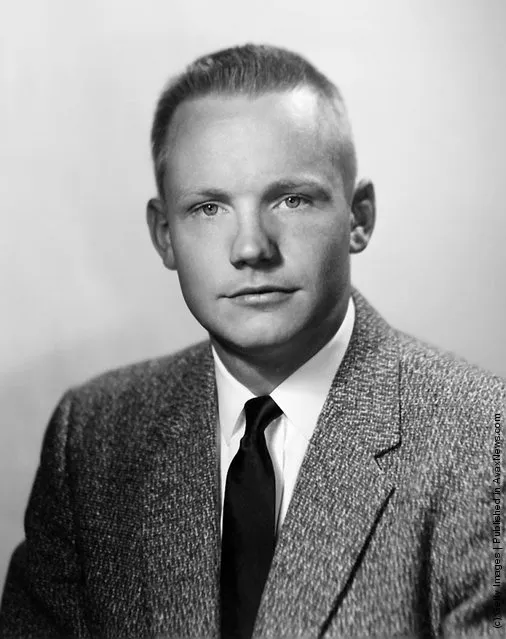
Portrait of Neil Armstrong in 1959, ten years prior to the Apollo 11 mission in which he became the first human to set foot on the moon. (Photo by NASA/Newsmakers)
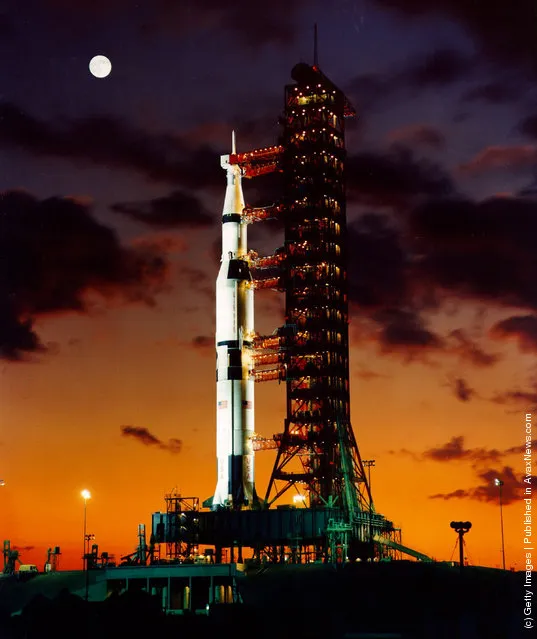
A pre-launch twilight photo of the The Apollo 11 Saturn V space vehicle. It lifted off July 16, 1969 from Kennedy Space Center in Florida. (Photo by NASA/Newsmakers)

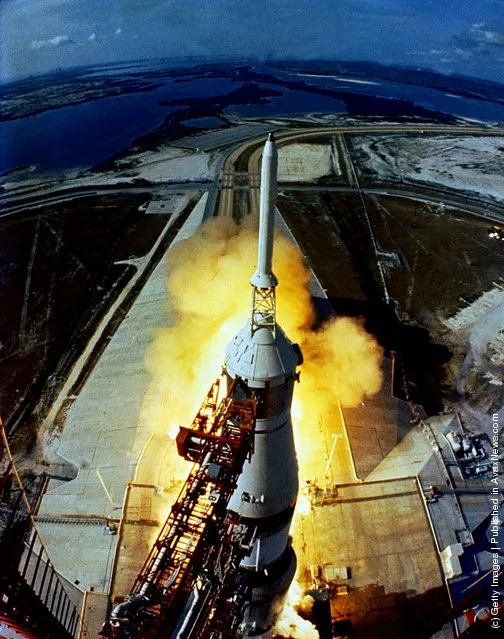
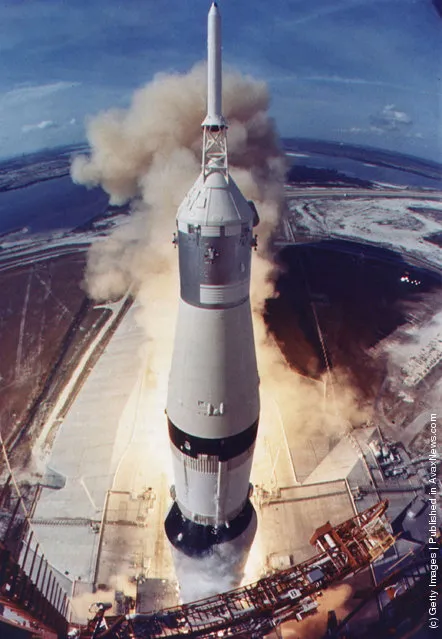
The Apollo 11 Saturn V space vehicle lifts off July 16, 1969 from Kennedy Space Center's Launch Complex in Florida. The space craft was injected into lunar orbit on July 19 with Astronauts Neil A. Armstrong, Michael Collins and Edwin E. Aldrin Jr. on board. (Photo by NASA/Newsmakers)
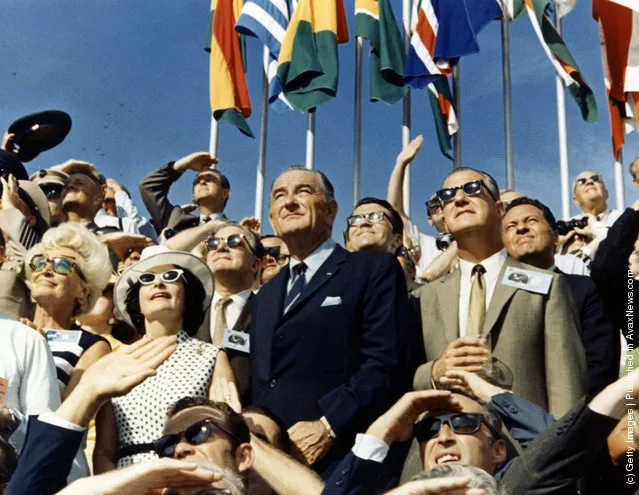
Vice President Spiro Agnew And Former President Lyndon Johnson View The Liftoff Of Apollo 11 From The Stands Located At The Kennedy Space Center Vip Viewing Site. The Apollo 11 Saturn V Space Vehicle Lifted Off On July 16, 1969 And Was Injected Into Lunar Orbit On July 19 With Astronauts Neil A. Armstrong, Michael Collins And Edwin E. Aldrin Jr., At 9:32 A.M. Edt July 16, 1969, From Kennedy Space Center's Launch Complex In Florida. The Lm (Lunar Module) Landed On The Moon On July 20, 1969 And Returned To The Command Module On July 21. The Command Module Left Lunar Orbit On July 22 And Returned To Earth On July 24, 1969. Apollo 11 Splashed Down In The Pacific Ocean On 24 July 1969 At 12:50:35 P.M. Edt After A Mission Elapsed Time Of 195 Hrs, 18 Mins, 35 Secs. (Photo By Nasa/Getty Images)
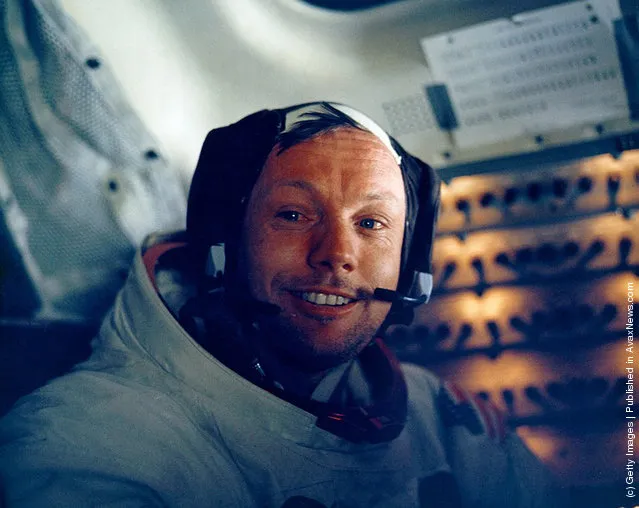
Astronaut Neil Armstrong smiles inside the Lunar Module July 20, 1969. (Photo by NASA/Newsmakers)
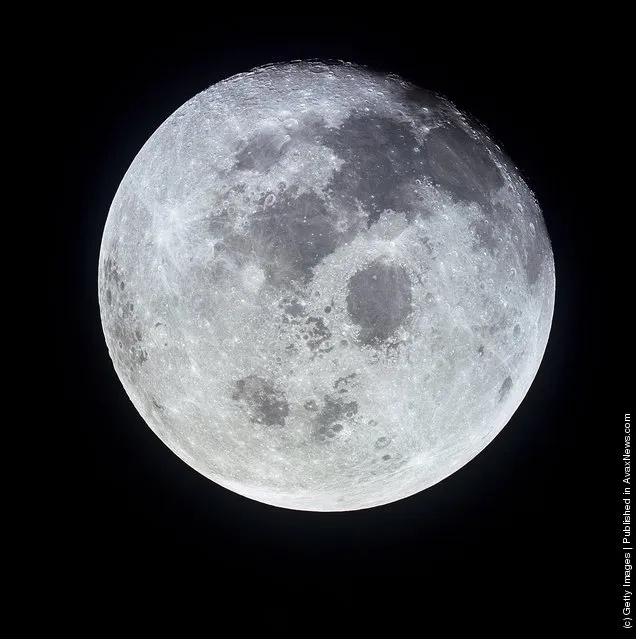
This outstanding view of the whole full Moon was photographed from the Apollo 11 spacecraft July 21, 1969 during its trans-Earth journey homeward. When this picture was taken, the spacecraft was already 10,000 nautical miles away. (Photo by NASA/Newsmakers)
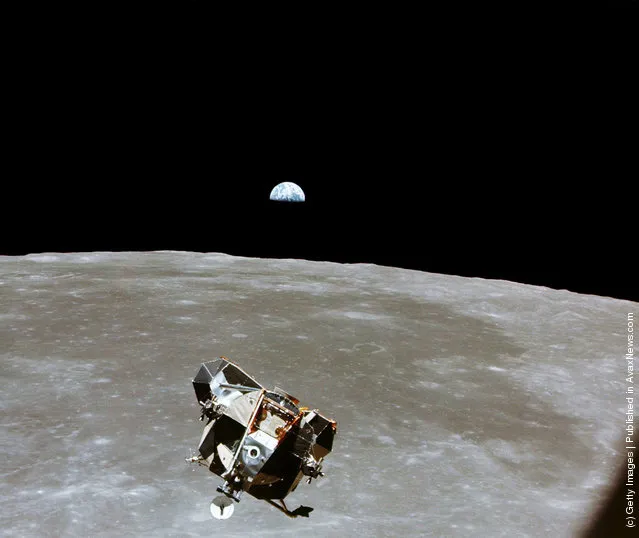
With a half-Earth in the background, the Lunar Module ascent stage with Moon-walking Astronauts Neil Armstrong and Edwin Aldrin Jr. approaches for a rendezvous with the Apollo Command Module manned by Michael Collins. The Apollo 11 liftoff from the Moon came early, ending a 22-hour stay on the Moon by Armstrong and Aldrin. (Photo by NASA/Newsmakers)
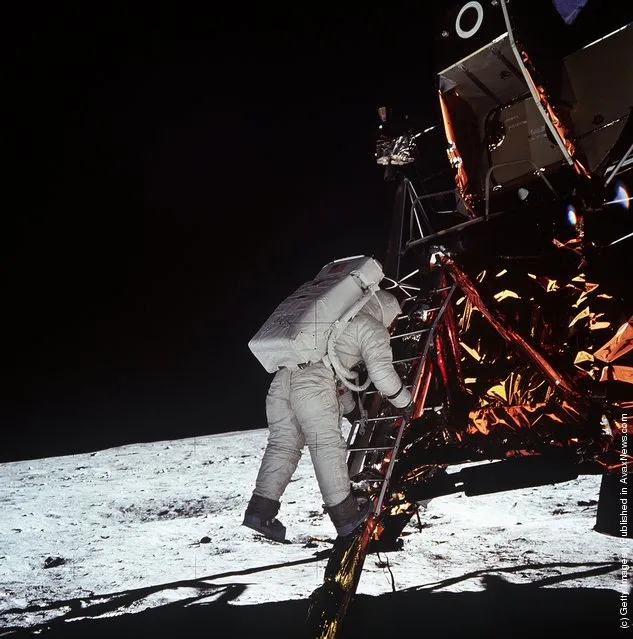
Astronaut Edwin E. Aldrin, Jr., lunar module pilot, descends the steps of the Lunar Module ladder July 20, 1969 as he prepares to walk on the Moon. This photograph was taken by Apollo 11 commander astronaut Neil A. Armstrong with a 70mm lunar surface camera during the Apollo 11 extravehicular activity. (Photo by NASA/Newsmakers)
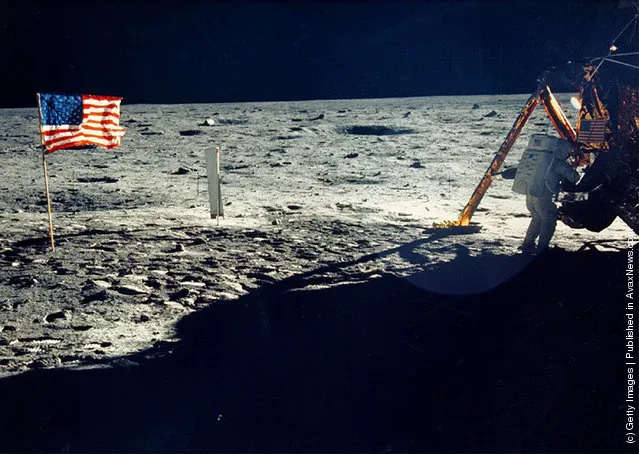
One of the few photographs of Neil Armstrong on the moon shows him working on his space craft on the lunar surface. (Photo by NASA/Newsmakers)
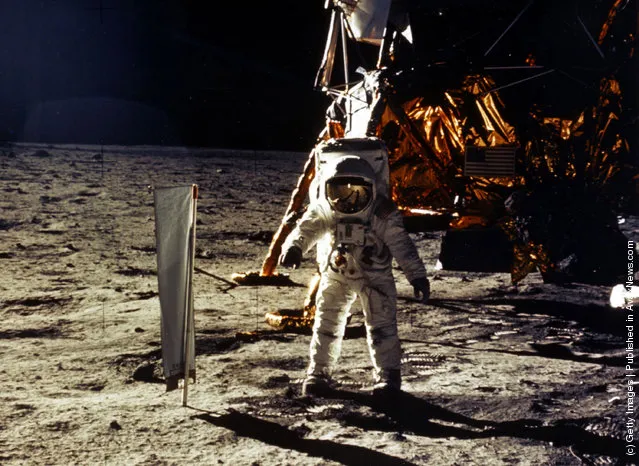
The deployment of scientific experiments by Astronaut Edwin Aldrin Jr. is photographed by Astronaut Neil Armstrong. Man's first landing on the Moon occurred July 20, 1969 as Lunar Module “Eagle” touched down gently on the Sea of Tranquility on the east side of the Moon. (Photo by NASA/Newsmakers)
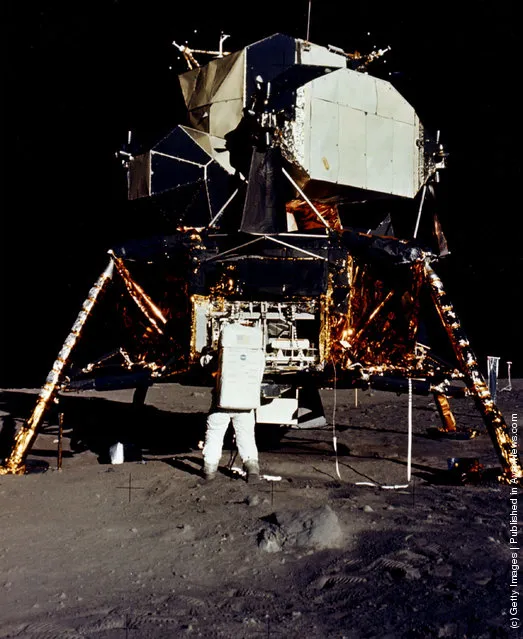
Astronaut Edwin E. Aldrin Jr., Lunar Module Pilot, removes scientific experiment packages from a stowage area in the Lunar Module's descent stage. The LM (lunar module) landed on the moon on July 20, 1969 and returned to the command module on July 21, 1969. (Photo by NASA/Newsmakers)

Astronaut Edwin E. Aldrin Jr., Lunar Module Pilot, stands near a scientific experiment on the lunar surface. (Photo by NASA/Newsmakers)
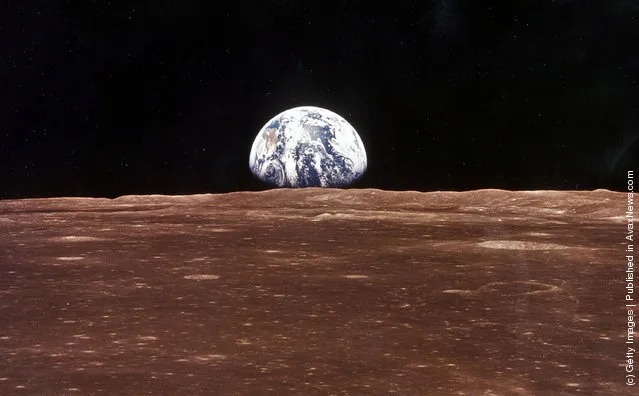
A view of the Earth appears over the Lunar horizon as the Apollo 11 Command Module comes into view of the Moon before Astronatus Neil Armstrong and Edwin Aldrin Jr. leave in the Lunar Module, “Eagle”, to become the first men to walk on the Moon's surface. (Photo by NASA/Newsmakers)
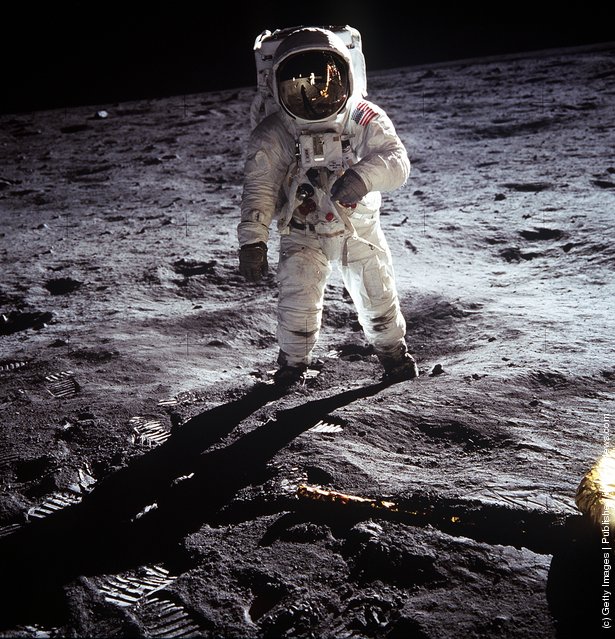
Astronaut Edwin E. Aldrin Jr. walks near the Lunar Module during the Apollo 11 extravehicular activity July 20, 1969 on the Moon. (Photo by NASA/Newsmakers)
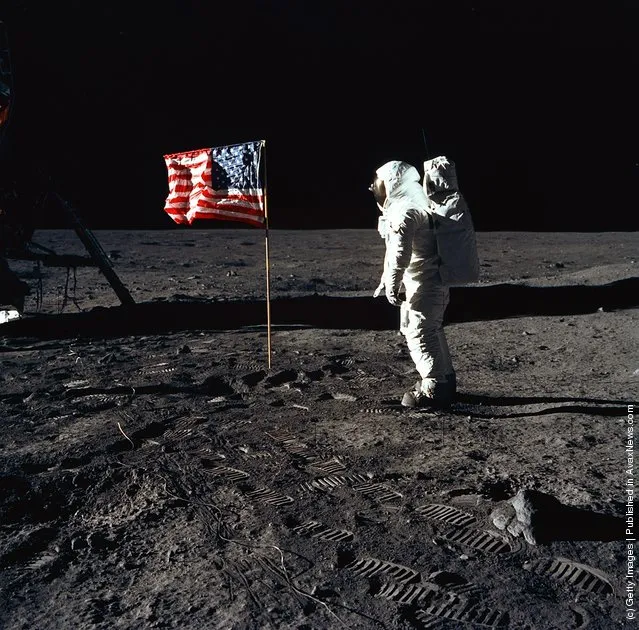
Astronaut Edwin E. Aldrin, Jr., the lunar module pilot of the first lunar landing mission, stands next to a United States flag July 20, 1969 during an Apollo 11 Extravehicular Activity (EVA) on the surface of the Moon. (Photo by NASA/Newsmakers)
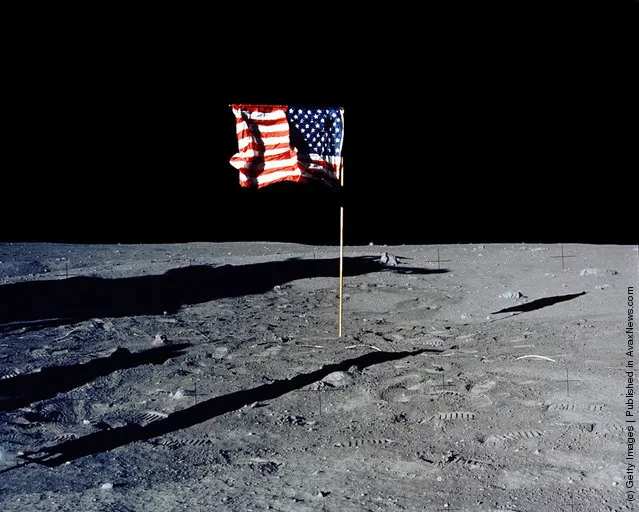
The flag of the United States stands alone on the surface of the moon. (Photo by NASA/Newsmakers)
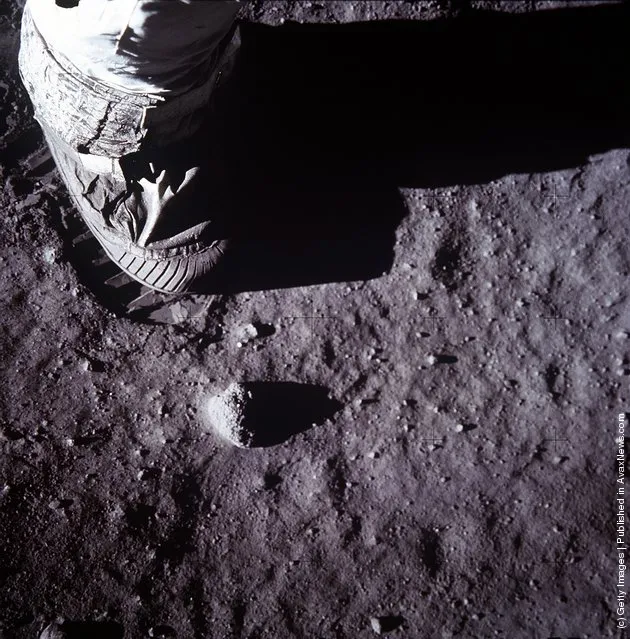
A close-up view of an astronaut's foot and foot print in the lunar soil is photographed with a 70mm lunar surface camera July 20, 1969 during the Apollo 11 lunar surface extravehicular activity (EVA). (Photo by NASA/Newsmakers)
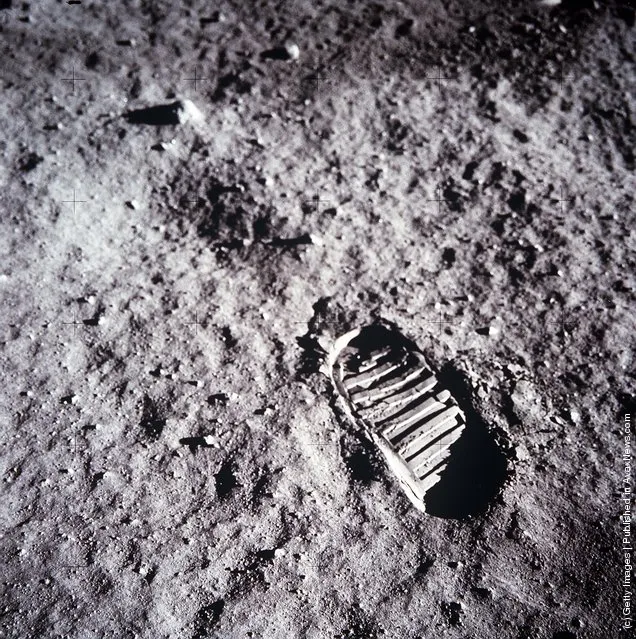
An astronaut's bootprint leaves a mark on the lunar surface July 20, 1969 on the moon. (Photo by NASA/Newsmakers)
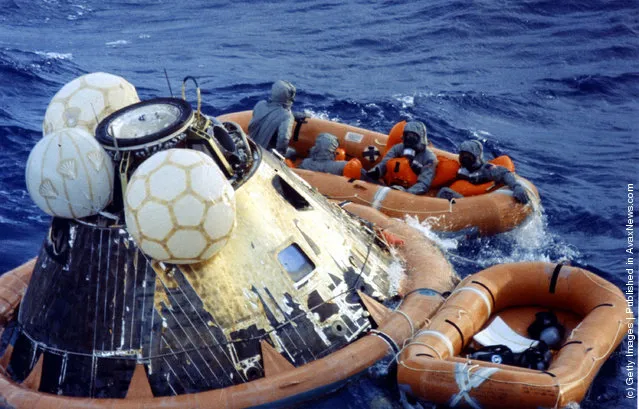
U.S. Navy pararescueman Lt. Clancey Hatleberg disinfects Apollo 11 Astronauts Neil A. Armstrong, Michael Collins and Edwin E. Aldrin Jr. after getting into the life raft during recovery operations today at the completion of their successful lunar landing mission. The space pilots donned biological isolation garments in their spacecraft. (Photo by NASA/Newsmakers)
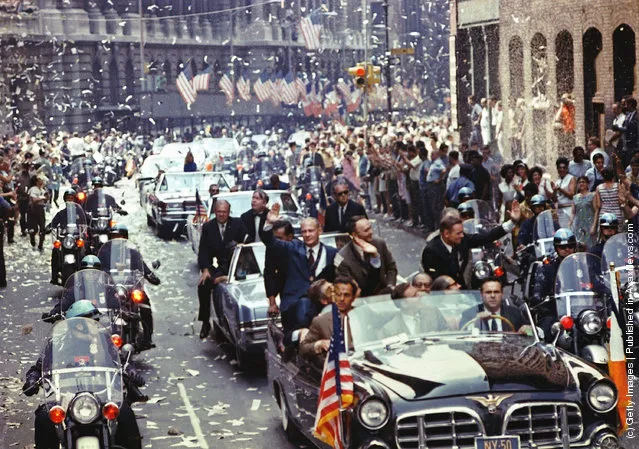
New York City welcomes the Apollo 11 crew in a showering of ticker tape down Broadway and Park Avenue August 13, 1969 in a parade termed as the largest in the city's history. Pictured in the lead car, from the right, are astronauts Neil A. Armstrong, commander; Michael Collins, command module pilot; and Edwin E. Aldrin Jr., lunar module pilot. The three astronauts teamed for the first manned lunar landing on July 20, 1969. (Photo by NASA/Newsmakers)
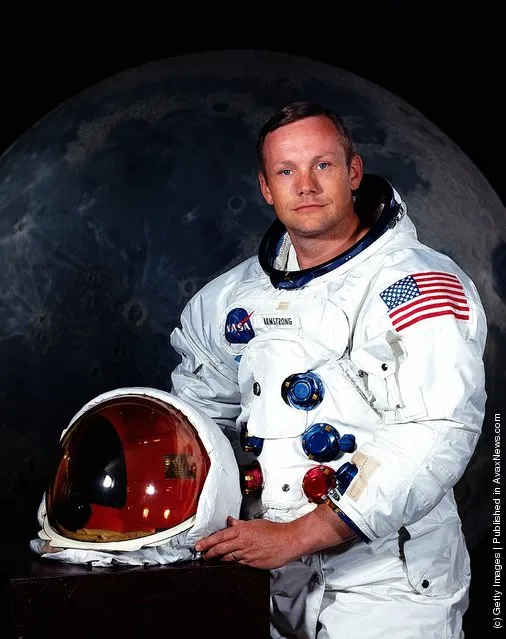
Astronaut Neil A. Armstrong poses for a portrait July 1969. Armstrong was the Commander of Apollo 11 Lunar Landing Mission. (Photo by NASA/Newsmakers)
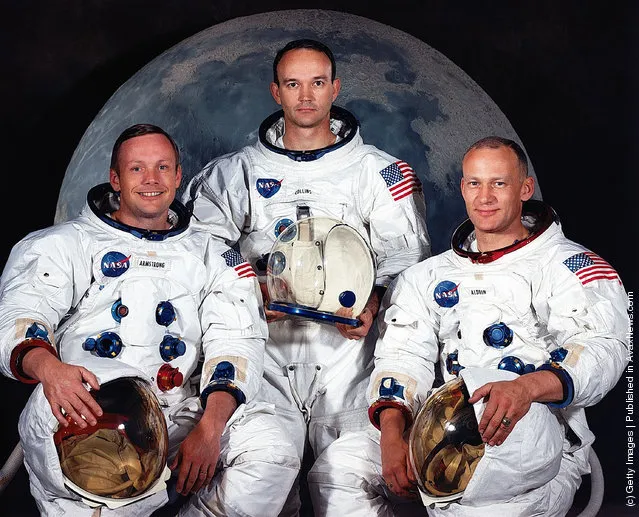
The National Aeronautics and Space Administration (NASA) has named these three astronauts as the prime crew of the Apollo 11 lunar landing mission. Left to right, are Neil A. Armstrong, commander; Michael Collins, command module pilot; and Edwin E. Aldrin Jr., lunar module pilot. (Photo by NASA/Newsmakers)
28 May 2011 11:04:00,
post received
0 comments
